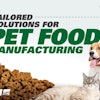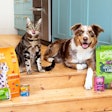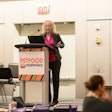
Although the wider pet industry grew to US$78.6 billion in 2018, federal data reflect a drop in United States consumer spending on pet food. Sales and marketing consultant John Gibbons analyzed data from 42,000 U.S. Bureau of Labor Statistics (BLS) Consumer Expenditure Surveys in his PetBusinessProfessor.com blog. He presented three reasons for the decline.
Pet spending in the U.S. 2017-2018
Considered together pet services, veterinary, supplies, pet and food sales increased in 2018 by US$1.47 billion, or 1.9%, over 2017. Supplies and veterinary had a particularly strong year, Gibbons wrote. However, pet food erased half of its large gains from the previous year.
U.S. BLS pet food sales data
- Pet Food – US$28.85B; Down US$2.27B (-7.3%)
- Pets and Supplies - US$19.80B; Up US$1.22B (+6.6%)
- Veterinary - US$21.23B; Up US$0.56B (+1.6%)
- Pet Services - US$8.72B; Up US$1.95B (+28.9%)
For pet food sales, only 2016’s US$2.99 billion drop matched the decline in 2018. Gibbons noted that the four largest changes sales from year to year have been during the past four years. He suggests that high-priced superpremium foods exacerbate changes in consumer purchasing behavior.
Three factors behind pet food spending drop in 2018
Gibbons discussed three potential causes of the 2018 drop in U.S. pet food spending.
1. The FDA warning about potential correlations among some grain-free dog foods and dilated cardiomyopathy. Although the investigation is ongoing, pet owners may have shifted back to conventional brands from higher priced grain-free varieties.
2. Value shopping has been intensified by the internet, as pet food e-commerce continues to grow in volume and value.
3. Millennials have been increasingly leaving their parents’ homes, leaving less to spend on their pets. While they tended to keep their pets, millennials may be buying lower priced pet foods.



















